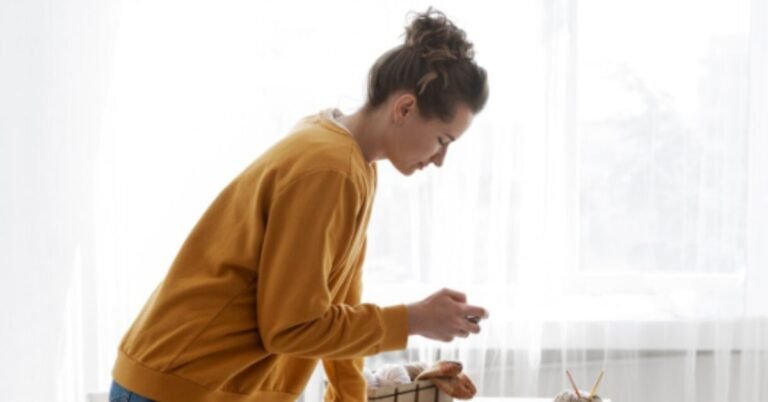Why Decluttering Is Harder Than It Looks
While most people desire a calm, orderly living environment, achieving this is often more complex than it appears. Emotional attachments to objects, even those no longer useful, can make letting go a lengthy process. With busy schedules and daily demands, many postpone tidying until “later,” which rarely happens. In these moments, consulting a professional home organizer can provide fresh perspectives and effective decluttering strategies, making the process more manageable.
Evidence shows that reluctance to part with possessions is common. The National Association of Productivity & Organizing Professionals indicates many hold on to items in case they may be useful someday, even if that day never arrives. Over time, innocent accumulation can lead to clutter that disrupts home aesthetics, increases stress, and hampers productivity. Research links stress with untidy spaces, suggesting that more organized environments enhance mental well-being and focus. Proactively addressing clutter, even in small steps, is vital for regaining control of both home and mind.
Simple Daily Habits For Everyday Order
- One-in, One-out Rule: Whenever you introduce a new item—whether it’s clothing, a kitchen gadget, or decor—make it a habit to donate, recycle, or discard a comparable possession. This intentional balancing act ensures that your storage never becomes overloaded, making it easier to both find what you need and maintain a clean home.
- Daily Reset: Carve out five minutes each evening, perhaps as part of your winding-down routine, to restore order. Return items to designated spots, fluff pillows, or straighten up one room. This steady rhythm prevents minor messes from expanding and saves considerable time in the long run.
- Mailbox Management: Tackle mail as soon as it comes in. Set up a recycling bin and a file for important papers right where you sort your mail so that you can act on them immediately. Preventing small paper piles avoids that notorious “mail mountain” from forming on countertops or tables.
- Clear Surfaces: Select a central surface in your home—such as the coffee table or kitchen island—to clear every day. A consistently tidy area establishes a visual baseline for order and can inspire similar habits in adjoining spaces.
Creating Functional Systems That Stick
Home organization is a personal process that requires a balance between individual style and the natural rhythms of your household. Investing in transparent bins, easy-to-read labels, and open shelving can help keep items visible and accessible. Avoid using unlabeled “junk drawers” and allocate specific spaces for each item. For families or shared spaces, color-coding or grouping by individual helps maintain accountability and responsibility. Regularly reviewing these systems ensures they adapt to your lifestyle and avoid chaos.
Decluttering With Purpose: Questions To Ask Yourself
- Have I used or needed this in the last year? Honest reflection about the frequency of use is a powerful motivator for letting go.
- If I were shopping today, would I buy this again? If not, it’s a clue that the item no longer fits your preferences or needs.
- Is this genuinely sentimental, or do I feel guilty letting it go? Nostalgia should make you smile, not weigh you down.
- Can I store this comfortably, or is it crowding my space? Assess whether it enhances your living area or creates unnecessary clutter.
Answering these questions candidly takes the pressure out of decluttering. According to Wirecutter’s expert-backed decluttering guide, homes that undergo such purposeful reviews every six months tend to maintain clarity and organization far longer. Reassessing regularly ensures that spaces remain functional and reflective of current interests, rather than past shopping habits.
How To Make Organization A Habit—Not A Chore
To maintain lifelong order, it’s essential to incorporate organization into your daily routine. The “20/10” method, which involves cleaning or decluttering for 20 minutes at a time followed by a 10-minute rest, is a time management technique that reduces overwhelm by breaking tasks into manageable intervals. Recognizing small milestones, such as taking photos or noticing a tidy shelf, reinforces efforts and creates positive associations. Apartment Therapy offers decluttering tips that provide daily challenges and reminders to keep things lively and sustainable.
Avoiding Clutter Traps In Everyday Life
Clutter often creeps in through channels we don’t notice—impulse buys, gifts, or “just in case” acquisitions. To counter this, practice mindfulness with each new addition. Pause to ask if you truly need and have space for the item. If sentimental value complicates parting with objects, take photos before letting go to preserve memories without cluttering your living space. Setting boundaries, such as limiting duplicate items or adopting a “one in, one out” philosophy, helps guard against the repetition of old patterns and prevents clutter from resurfacing.
When you make each purchase or decision with intention, the urge to continually accumulate wanes. Mindful consumption—whether in stores or online—carries forward into all areas of life, making your home a sanctuary rather than a storage facility.
When To Ask For Help
Organizing doesn’t have to be undertaken alone. For many, accountability makes all the difference—enlisting a friend or loved one to check progress or provide encouragement can accelerate transformation. Professional guidance is invaluable when you’re overwhelmed, stuck, or simply craving expert advice. Workshops, community classes, and online forums also provide structure and support, making the organization a communal experience and a personal victory.
Whether your obstacles are emotional or logistical, outside perspectives often unlock new solutions, making the process less isolating and more enjoyable. Ultimately, a clutter-free life is a collection of small, thoughtful steps shared by those who are ready to support each other on the journey.

